Ancient Egypt, a civilization steeped in mystery and wonder, fascinates us with its blend of science and magic in the field of medicine and healing practices. The ancient Egyptians, with their profound belief in the power of divine intervention and their quest for scientific knowledge, developed a unique approach to healthcare. From the mystical rituals and spells to the meticulous documentation of medical knowledge, this article uncovers the intriguing secrets of medicine in ancient Egypt. Explore the role of priests and priestesses, the use of herbal remedies and natural ingredients, and the influence of religious beliefs on healing. Step into the realm of ancient Egypt and discover a fascinating world where science and magic intertwined to bring about healing and well-being.
Contents
- 1. The Belief in Magic and Divine Intervention
- 2. Scientific Approach in Ancient Egypt
- 3. Herbal Remedies and Natural Ingredients
- 4. Rituals and Incantations for Healing
- 5. The Influence of Religious Beliefs on Healing
- Conclusion
-
Frequently Asked Questions
- 1. Why did the ancient Egyptians believe in the power of magic in healing?
- 2. Were magical spells and rituals effective in ancient Egyptian medicine?
- 3. What were the roles of priests and priestesses in ancient Egyptian healing?
- 4. Did the ancient Egyptians use amulets and charms for healing?
- 5. How were herbs and plants used in ancient Egyptian medicine?
- 6. Did the ancient Egyptians document their medical knowledge?
- 7. Were surgical techniques practiced in ancient Egypt?
- 8. What was the significance of divine intervention in healing practices?
- 9. Did the belief in magic and divine intervention influence other aspects of ancient Egyptian life?
- 10. How did religious beliefs shape healing practices in ancient Egypt?
- References
-
Frequently Asked Questions
- 1. How did the ancient Egyptians view the concept of healing?
- 2. What role did priests and priestesses play in ancient Egyptian healing practices?
- 3. Were there any scientific aspects to medicine in ancient Egypt?
- 4. How did ancient Egyptians use herbs and plants in their medical treatments?
- 5. What was the process of preparing medicines in ancient Egypt like?
- 6. Did ancient Egyptians believe in the power of rituals and spells for healing?
- 7. What were some of the magical protection amulets and charms used for healing?
- 8. Which deities were associated with healing in ancient Egyptian religion?
- 9. Were temples used as healing centers in ancient Egypt?
- 10. How did ancient Egyptian medicine influence later civilizations?
- References
- Read More
1. The Belief in Magic and Divine Intervention
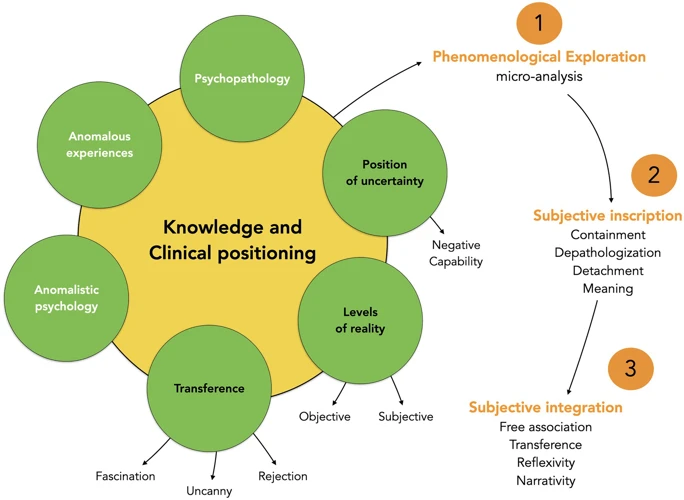
The ancient Egyptians had a deeply ingrained belief in the power of magic and divine intervention when it came to healing. They believed that illness and physical ailments were often caused by supernatural forces and could only be cured through magical means. This belief in magic was not limited to healthcare alone; it permeated every aspect of their lives. Magic was seen as a way to tap into the supernatural and harness its power to influence the physical world. This belief gave rise to the practice of incorporating magical elements in the process of healing. Magical spells and rituals were used to invoke the gods and seek their intervention in curing diseases and ailments. The ancient Egyptians believed that these spells had the power to not only heal the body but also protect it from future illnesses. The use of charms and amulets, believed to have magical properties, was also common in their healing practices. These objects were imbued with the power of the gods and were worn or carried by individuals to ward off evil spirits and promote healing. The priests and priestesses played a pivotal role in the process of healing, as they were believed to have a direct connection with the gods. They were trained in the art of performing rituals and casting spells for healing purposes. They served as intermediaries between the gods and the people, conveying the needs and desires of the individuals seeking healing to the divine realm. This strong belief in magic and divine intervention shaped the healthcare practices of ancient Egyptians, blending science and spirituality in their quest for well-being and restoration of health.
1.1. Magical Elements in Healing
Magical elements played a significant role in the healing practices of ancient Egypt. The ancient Egyptians believed in the power of spells, rituals, and amulets to bring about healing and ward off illness. Magical spells, often recited by priests or written on papyrus scrolls, were used to invoke specific deities associated with healing. These spells were believed to harness the divine energy and direct it towards the desired outcome of healing. The use of rituals was another integral part of magical healing. Rituals were performed to create a sacred space and establish a connection with the gods. They involved purification, offerings, and the recitation of prayers or spells. These rituals were seen as a way to attract the attention and favor of the gods, who would then intervene in the healing process.
Amulets and charms were also considered powerful magical tools in healing. These objects were often made of precious stones, metals, or other materials believed to possess protective and healing properties. For example, the Eye of Horus amulet was frequently worn to invoke the healing powers of the god Horus. Similarly, the Ankh symbol, representing eternal life, was believed to grant protection and promote well-being. These amulets were worn or carried by individuals as a form of magical protection against illness and as a means to promote healing.
The use of magical elements in healing demonstrates how the ancient Egyptians blended science and spirituality. They believed that by invoking the gods and utilizing magical practices, they could tap into supernatural forces to aid in the healing process. This belief in the power of magic and divine intervention was a central aspect of ancient Egyptian healing practices, shaping their approach to healthcare and emphasizing the interconnectedness between the physical and the spiritual realms.
1.2. Role of Priests and Priestesses
The priests and priestesses held a significant role in ancient Egyptian society, particularly when it came to matters of healing and medicine. They were considered as the intermediaries between the divine world and the mortal realm. The priests and priestesses were highly respected and held in high regard for their spiritual knowledge and connection to the gods. It was believed that they possessed the ability to communicate with the deities and seek their guidance and intervention for healing purposes. They underwent extensive training and education in various aspects of religious rituals, magical spells, and medical practices. Their knowledge of the sacred texts and incantations allowed them to perform rituals and ceremonies aimed at invoking the gods and seeking their favor in healing the sick and injured. The priests and priestesses played a multifaceted role in healthcare. They not only performed rituals but also provided consultation and diagnosis to individuals seeking healing. They would listen to the symptoms and complaints of the patients, interpret them in a spiritual context, and prescribe appropriate treatments or rituals. They believed that restoring harmony between the physical and spiritual aspects of an individual was crucial for achieving healing. The priests and priestesses also operated in the temples, which served as centers for healing and medical practices. These temples housed sacred statues and shrines dedicated to specific deities associated with healing, such as Sekhmet, the lion-headed goddess of healing and Hathor, the goddess of love and beauty. Individuals would visit the temples seeking divine intervention and the priests and priestesses would guide them through rituals and ceremonies aimed at invoking the healing powers of the deities. The role of the priests and priestesses in ancient Egyptian medicine was pivotal, as they bridged the gap between the human world and the realm of the gods, bringing forth the power of magic and divine intervention in the pursuit of health and well-being.
2. Scientific Approach in Ancient Egypt
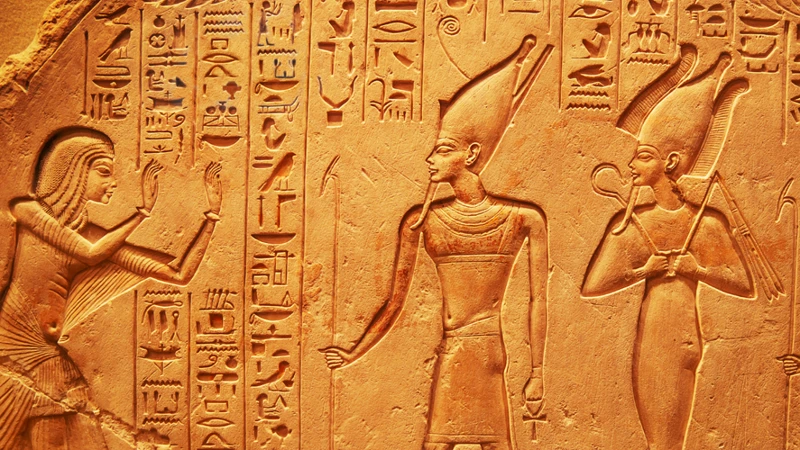
In addition to their belief in magic and divine intervention, the ancient Egyptians also had a scientific approach to medicine. They were pioneers in documenting medical knowledge and advancements, making them one of the earliest civilizations to have a systematic approach to healthcare. The ancient Egyptians had a deep understanding of human anatomy and the workings of the body. They studied the various organs and their functions, as well as the circulation of blood and the concept of pulse. The knowledge they acquired was meticulously recorded on papyrus scrolls, forming the foundation of their medical texts. These texts covered a wide range of medical topics, including descriptions of diseases, diagnostic methods, and treatment techniques. The surgical practices of ancient Egypt were also highly advanced for their time. Surgeons performed complex procedures such as bone setting, dental work, and even brain surgery. Evidence of successful surgical procedures can be found in the remains of ancient Egyptian mummies. They also had a sophisticated understanding of pharmacology and utilized a wide variety of natural substances in their remedies. Plants and herbs were meticulously collected, analyzed, and prepared for medicinal use. Medical professionals in ancient Egypt were known as “swnw,” and they were highly respected for their knowledge and expertise. While their approach to medicine may seem mystical or even magical to us today, the ancient Egyptians had a scientific mindset and approach to healthcare that contributed to their well-earned reputation for being pioneers in the field of medicine.
2.1. Medical Knowledge and Documentation
Medical knowledge and documentation were of utmost importance in ancient Egypt, showcasing their commitment to a scientific approach to healthcare. The ancient Egyptians had a deep understanding of human anatomy and medical conditions, which they meticulously documented for future generations. Medical papyri, such as the Edwin Smith Papyrus and the Ebers Papyrus, served as valuable sources of medical knowledge. These documents contained detailed descriptions of various diseases, their symptoms, and recommended treatments. The medical texts also included surgical procedures, remedies for common ailments, and even obstetric practices. The meticulous nature of their documentation highlights the Egyptians’ commitment to advancing medical knowledge and their desire to ensure that it could be passed down through generations.
One significant aspect of their medical knowledge was the recognition of different body organs and their functions. Although their understanding was limited compared to modern standards, the Egyptians were able to identify and differentiate various organs such as the heart, liver, and kidneys. They believed that these organs played vital roles in the overall well-being of a person.
The Egyptians paid close attention to the observation and examination of patients. They believed in the importance of diagnosing ailments accurately before proceeding with any treatment. This emphasis on observation and examination helped them refine their medical knowledge and develop effective treatments for a range of conditions.
The documentation of medical knowledge also extended to the field of pharmacology. The ancient Egyptians were skilled in the preparation and administration of medicines. They utilized a wide variety of natural ingredients, including herbs, plants, and minerals, to create remedies for different ailments. Their understanding of the medicinal properties of these ingredients was documented and passed down through generations. These herbal remedies were used to treat a wide range of conditions, including digestive disorders, skin ailments, and respiratory infections.
The meticulous medical knowledge and documentation in ancient Egypt laid the foundation for scientific advancements in healthcare. The Egyptians’ commitment to recording their medical practices and observations demonstrated their dedication to understanding the human body and finding effective treatments for various ailments. These medical documents provide valuable insights into the early development of medical science and the blending of scientific approaches with ancient mystical beliefs.
2.2. Surgical Techniques
Surgical techniques in ancient Egypt were an important aspect of their medical practices, showcasing their advanced knowledge and skills in the field of medicine. The ancient Egyptians were skilled in performing a variety of surgical procedures that aimed to treat different conditions and injuries. These surgical techniques were often carried out by specialized physicians known as “swnw,” who were highly trained and respected in their profession.
One of the most common surgical procedures in ancient Egypt was trepanation, which involved drilling or cutting a hole into the skull. This procedure was used to treat various conditions, such as head injuries, fractures, or even to release cranial pressure. It was believed that trepanation could alleviate pain, remove evil spirits, and promote healing.
Another surgical technique employed by ancient Egyptian physicians was the removal of tumors or cysts. They used sharp instruments made from copper or bronze to carefully excise the growths, followed by cauterization to prevent infection. The Egyptians also practiced circumcision, particularly in males, as a religious and cultural tradition. Surgical instruments such as scalpels, probes, and forceps were used during these procedures.
The ancient Egyptians were keen on maintaining hygienic practices during surgeries to prevent infection. They would clean the surgical site with water or wine, and dress the wound with clean linen bandages to promote healing. They were also aware of the importance of anesthesia and employed various methods to minimize pain during surgical procedures. These included the use of herbal concoctions, such as opium or mandrake, which acted as sedatives.
It is fascinating to note that despite the lack of modern medical technology, the ancient Egyptians were able to perform these surgical procedures with a high degree of success. Their knowledge of human anatomy, including the understanding of organs and their functions, allowed them to carefully navigate the body during surgeries. These surgical techniques highlight the remarkable progress made by ancient Egypt in the field of medicine, bridging the gap between science and healing practices in their civilization.
2.3. Pharmacological Practices
Pharmacological practices played a significant role in the ancient Egyptian healthcare system. The Egyptians were skilled in using plants and natural substances for medicinal purposes, and their knowledge of pharmacology was impressive for its time. They believed that various plants had healing properties, and these plants were carefully cultivated and utilized in their medical treatments. The use of herbal remedies formed the backbone of their pharmacological practices. These remedies consisted of different plant parts such as leaves, flowers, roots, and seeds, which were prepared in various forms to treat specific ailments. The ancient Egyptians relied on their extensive knowledge of plants and their medicinal properties to create effective remedies. They documented their findings on papyrus rolls and created detailed recipes that were passed down through generations. These prescriptions include remedies for illnesses ranging from common ailments like colds and headaches to more severe conditions such as infections and gastrointestinal disorders. Medicines were prepared by grinding or crushing the required plant materials, followed by mixing them with liquid or other ingredients to create ointments, potions, or poultices. Some of the common ingredients used in their preparations included aloe vera, garlic, honey, and various herbs. The use of natural ingredients in their pharmacological practices reflects the ancient Egyptians’ understanding of the healing properties found in nature. Although their methods may seem primitive compared to modern medicine, the Egyptians were pioneers in the field of pharmacology and laid the foundation for future advancements in healthcare. They recognized the power of nature and its ability to provide remedies for various ailments, a principle that still holds value in modern pharmaceutical practices.
3. Herbal Remedies and Natural Ingredients
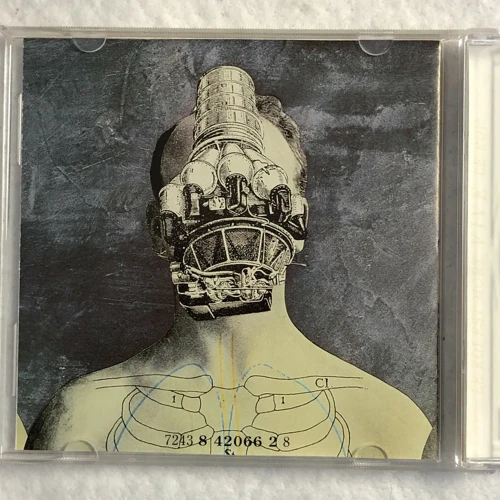
Herbal remedies and natural ingredients played a significant role in the medicine and healing practices of ancient Egypt. The ancient Egyptians had extensive knowledge of plants and their medicinal properties, which they incorporated into their healthcare system. They believed that certain plants possessed healing properties and could be used to treat various ailments and illnesses. The use of herbs and plants in medicine was not only limited to internal consumption but also included ointments, poultices, and infusions.
Use of Herbs and Plants in Medicine: The ancient Egyptians utilized a wide range of herbs and plants in their medicinal practices. For example, aloe vera was used for its soothing and healing properties and was often applied topically to treat burns, skin irritations, and wounds. Another commonly used plant was garlic, known for its antimicrobial properties, which were believed to help fight off infections. Other plants like chamomile, mint, and lavender were used for their calming and digestive properties. These herbal remedies were not only effective in treating physical ailments but also had a psychological impact on patients, promoting a sense of well-being and comfort.
Preparation of Medicines: The preparation of medicines in ancient Egypt was a meticulous process. The herbs and plants were carefully collected, dried, and ground into powders or mixed with other ingredients to create ointments or infusions. The ancient Egyptians had a deep understanding of the importance of dosage and potency. They devised specific recipes and formulas, often recorded on papyrus scrolls, to ensure the effectiveness of the medicines. These recipes documented the precise measurements and methods of preparation, highlighting the scientific approach that was taken towards healthcare.
The use of herbal remedies and natural ingredients in ancient Egyptian medicine demonstrates their understanding and appreciation of the medicinal properties of plants. This approach to healing aligned with their overall belief in the interconnectedness of nature, spirituality, and medicine. By harnessing the power of herbs and plants, the ancient Egyptians were able to integrate the healing properties of nature into their healthcare practices, presenting a holistic and comprehensive approach to medicine.
3.1. Use of Herbs and Plants in Medicine
The ancient Egyptians had a rich knowledge of the healing properties of herbs and plants, which they extensively utilized in their medical practices. They believed that various plants possessed specific medicinal properties that could be harnessed for healing purposes. A wide range of herbs and plants were used in ancient Egyptian medicine, each with its own unique benefits. One such herb was the aloe vera plant, known for its soothing properties and ability to treat skin conditions. It was used to heal wounds, burns, and even as a topical treatment for skin ailments. The Egyptians also recognized the medicinal properties of garlic, a plant known for its antibacterial and antiviral properties. It was used to treat infections and boost the immune system. Another commonly used herb was frankincense, appreciated for its anti-inflammatory and analgesic properties. It was often burned as incense or used in oil form for its healing effects. Other plants like chamomile, thyme, and peppermint were also employed for their medicinal benefits. These herbs were used in various forms, including powders, ointments, and infusions. The Egyptians possessed knowledge of the proper dosages and combinations of herbs to create effective remedies. Their expertise in herbal medicine contributed to the successful treatment of various ailments and the promotion of overall well-being. The use of herbs and plants in ancient Egyptian medicine showcases their deep understanding of nature and its healing potential. It is a testament to their sophisticated approach to healthcare, blending scientific observation and mystical beliefs to create a holistic healing system.
3.2. Preparation of Medicines
In the realm of ancient Egyptian medicine, the preparation of medicines was a meticulous and carefully crafted process. The ancient Egyptians had a deep understanding of the healing properties of various herbs and natural ingredients. These ingredients were gathered from plants, minerals, and animal sources, and each had its own specific purpose in the creation of medicines. The process began with the identification and selection of the appropriate ingredients based on the desired outcome or treatment goal. Once the ingredients were gathered, they were often dried and crushed to create powders or extracts. These powders and extracts were then mixed together, sometimes with the addition of other substances such as honey or wine, to form a medicinal concoction. The mixing and blending of ingredients required precise measurements and ratios to ensure the desired medicinal properties were achieved. Knowledge of the appropriate dosage and administration methods was essential to maximize the effectiveness of the medicines. Medical practitioners, including priests and priestesses, played a crucial role in this process as they possessed the knowledge and expertise to prepare the medicines accurately. The preparation of medicines in ancient Egypt was not just a scientific process but also incorporated spiritual beliefs and rituals. The belief in the power of divine intervention was intertwined with the preparation of medicines, and prayers or incantations were often recited during the process to invoke the blessings of the gods and enhance the healing properties of the medicines. This holistic approach to medicine reflects the harmonious blending of science and spirituality in ancient Egyptian healing practices.
4. Rituals and Incantations for Healing
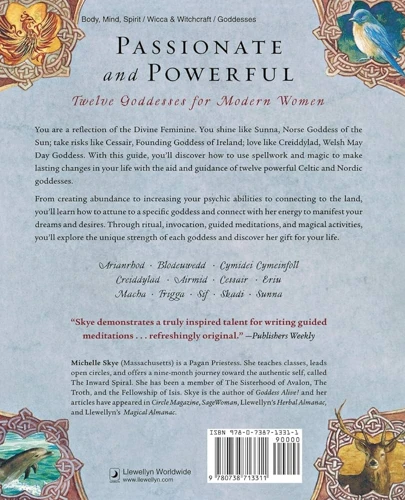
Rituals and incantations held a significant place in the healing practices of ancient Egypt. The ancient Egyptians believed that performing specific rituals and reciting sacred incantations could invoke divine forces and bring about healing. These rituals were often conducted by priests and priestesses who possessed the knowledge and expertise to connect with the gods. One prominent ritual used for healing was the “opening of the mouth” ceremony. This ceremony involved a sequence of symbolic gestures and recitations aimed at restoring the senses and abilities of the deceased in the afterlife. However, it was also adapted for healing the living. The priest performing the ritual would utter powerful incantations and use specific tools to touch the patient’s mouth and body, symbolizing the restoration of life and health. These rituals were believed to remove any spiritual or supernatural impediments causing illness and restore balance to the individual’s being. Another common healing ritual was the use of magical spells, also known as “hekau”. These spells were written on papyri or inscribed on amulets and worn by the individual seeking healing. By reciting these spells and invoking the names of gods and goddesses, it was believed that the healing process would be facilitated. The spells often included specific instructions for recitation, gestures, and offerings to be made to the gods. Some spells were also accompanied by the use of medicinal herbs or potions. It is important to note that these rituals and incantations were not confined to physical healing alone but also encompassed mental and spiritual well-being. The connection between the physical, mental, and spiritual aspects of an individual was at the core of ancient Egyptian healing practices. Through the combination of rituals, incantations, herbal remedies, and divine intervention, the ancient Egyptians sought to restore and maintain health in a holistic manner. This integration of science, magic, and spirituality illustrates the multifaceted nature of healing in ancient Egypt.
4.1. Rituals and Spells
Rituals and spells held a significant place in the healing practices of ancient Egypt. These rituals were performed with the belief that they had the power to invoke the gods and deities, seeking their aid in the healing process. The priests and priestesses, trained in the art of performing these rituals, would conduct ceremonies filled with symbolism and incantations to harness the supernatural forces of the gods. The rituals often involved the use of sacred objects, such as statues or images representing the deities associated with healing. The priests would offer prayers, burn incense, and make offerings to these divine beings, beseeching them for their intervention and assistance. The healing spells used specific words and formulas believed to carry magical power. These spells were either spoken or written down on papyrus, amulets, or other objects, and then invoked during the ritualistic ceremonies. The words and actions performed during these rituals were believed to have the ability to tap into the spiritual realm and bring about the desired healing outcomes. The power of intention and belief played a crucial role in the efficacy of these rituals and spells. The ancient Egyptians firmly believed that the gods would respond to their pleas and heal the afflicted individuals, providing relief from various ailments and restoring health and well-being. The rituals and spells connected the mortal world with the divine realm, creating a bridge through which divine healing powers could flow. This blending of magic and spirituality in the healing rituals of ancient Egypt showcases the deep-rooted belief system and the intricate approach that the ancient Egyptians had towards restoring health and balance.
4.2. Magical Protection Amulets and Charms
Magical protection amulets and charms held a significant place in the healing practices of ancient Egypt. These objects were believed to possess powerful magical properties that could safeguard individuals from harm and bring about healing. The amulets and charms came in various forms, each representing a specific deity or symbol associated with protection and well-being. One such popular amulet was the Eye of Horus, symbolizing healing and restoration. This amulet was worn or carried by individuals to invoke the protection of the powerful god Horus. Another commonly used amulet was the ankh, which represented eternal life and vitality. It was believed to bring about the healing of physical and spiritual ailments. The scarab beetle amulet was also highly revered, symbolizing rebirth and protection. Its connection to the sun god Ra made it a powerful talisman for warding off evil and promoting healing. These amulets were often made of precious stones, such as lapis lazuli and turquoise, and were worn as jewelry or incorporated into clothing or accessories. They were also sometimes placed in tombs or carried by individuals as a form of constant protection. The belief in the magical properties of these amulets and charms was deeply ingrained in ancient Egyptian society, and their use was considered an integral part of the healing process. Through the combination of ancient Egyptian spirituality and the belief in the power of these symbols, individuals sought to harness the forces of magic and enhance their chances of healing and well-being.
5. The Influence of Religious Beliefs on Healing
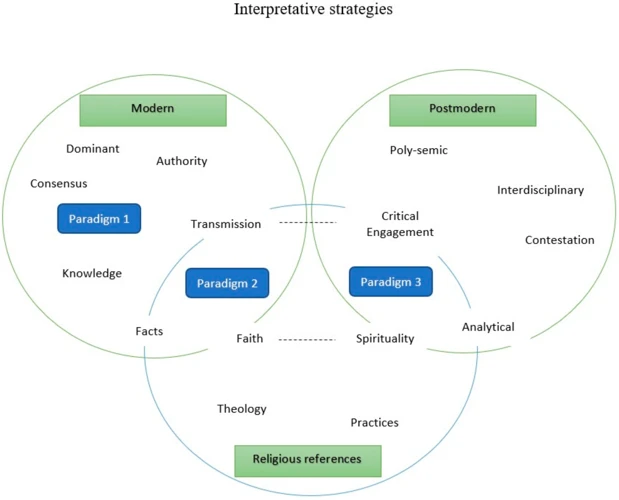
The religious beliefs of ancient Egyptians had a profound influence on their approach to healing. They worshiped a pantheon of gods and goddesses, many of whom were associated with healing and well-being. One such deity was Isis, who was revered as the goddess of magic, healing, and fertility. Her cult had a significant impact on the medical practices of ancient Egyptians. The followers of Isis believed that she possessed the power to restore health and bring about miraculous healings. Temples dedicated to Isis served as healing centers, where individuals sought her divine intervention through rituals and prayers.
The religious beliefs also influenced the concept of the human body in ancient Egypt. The Egyptians believed that the body was made up of various interconnected elements, including the physical body, ka (the life force), and ba (the soul). Illness was seen as a disruption in the harmony and balance of these elements, which could be restored through religious rituals and offerings to the gods.
The temples in ancient Egypt played a crucial role in healing practices. These grand structures were not just places of worship but also centers of healthcare. The priests and priestesses, who were well-versed in medicinal knowledge, administered treatments and performed rituals to heal the sick. The temples housed sacred statues of the deities associated with healing, and people believed that the presence of these statues imparted divine energy, which had a therapeutic effect. Patients would visit the temples seeking divine intervention, leaving offerings and prayers to the gods in exchange for their healing.
The religious beliefs of ancient Egyptians played a significant role in shaping their approach to healing. They believed in the power of the gods and goddesses to bring about miraculous healings, and temples served as centers for seeking divine intervention. The influence of religious beliefs extended to the understanding of the human body and its connection to spiritual and physical well-being. Through rituals, prayers, and offerings, the ancient Egyptians sought to restore balance and harmony within themselves, relying on the intersection of science and spirituality in their quest for healing.
5.1. Worship of Deities Associated with Healing
In ancient Egypt, the worship of deities associated with healing played a central role in their healthcare practices. The ancient Egyptians believed that specific gods and goddesses held the power to cure illnesses and alleviate suffering. One prominent deity associated with healing was Isis, the goddess of magic and medicine. She was revered as the ultimate healer and protector. The worship of Isis involved rituals and offerings to seek her blessings and assistance in healing ailments. Temples dedicated to Isis served as centers for healing where individuals could come to seek her divine intervention. Another deity associated with healing was Sekhmet, the lion-headed goddess known for her fierce and protective nature. She was believed to have the power to ward off diseases and protect against evil spirits. Individuals would pray and make offerings to Sekhmet to appease her and gain her favor for healing. Imhotep, the god of medicine and healing, was also highly revered in ancient Egypt. He was seen as a divine physician and a source of medical knowledge. The worship of Imhotep involved rituals and prayers seeking his guidance and inspiration for healing practices. The ancient Egyptians believed that by honoring and worshiping these deities, they could harness their powers and receive their blessings for healing and well-being. The worship of deities associated with healing was an integral part of the ancient Egyptian healthcare system, intertwining spirituality and medicine.
5.2. Temples as Healing Centers
Temples in ancient Egypt held a significant role as healing centers. These sacred structures were not only places of worship but also hubs of medical care and spiritual healing. The temples were dedicated to various gods and goddesses associated with healing, such as Sekhmet, the lion-headed goddess of medicine, and Imhotep, the god of healing and wisdom. The belief was that these deities possessed the power to cure ailments and restore health. Inside the temples, there were designated areas where priests and priestesses conducted healing rituals and offered prayers to the gods. Patients would come to the temples seeking divine intervention for their illnesses. The priest or priestess would perform healing rituals, which often involved reciting spells and incantations to invoke the healing powers of the gods. These rituals aimed to purify the individual’s spirit and bring about physical healing. The temples also provided an environment conducive to healing, with their serene ambiance and beautiful architecture. The ancient Egyptians believed that the energy within the temple, combined with the presence of the deity, created a powerful healing atmosphere. Individuals seeking healing would spend time in these temples, offering prayers and making offerings to the deity associated with their particular ailment. The temples offered not only physical healing but also a sense of spiritual solace and hope. They were regarded as sacred spaces where individuals could connect with the divine and find comfort in their time of need. The temples served as vital healing centers in ancient Egypt, merging religious beliefs with medical practices to provide a holistic approach to well-being and restoration of health.
Conclusion
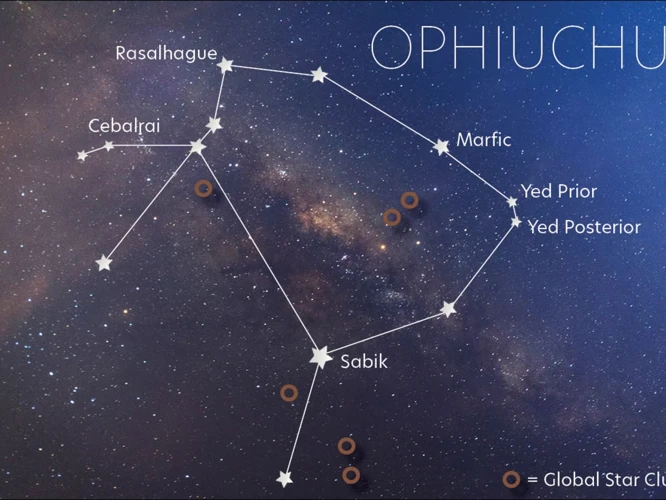
In conclusion, the ancient Egyptians’ approach to medicine and healing practices was a unique blend of science and magic. Their belief in magic and divine intervention influenced every aspect of their healthcare system. They believed that the power of the gods could be invoked through magical spells, rituals, and the use of charms and amulets, which were believed to possess supernatural properties. At the same time, the ancient Egyptians also had a scientific approach to medicine. They documented their medical knowledge, developed surgical techniques, and practiced pharmacology using natural ingredients and herbs. It is clear that the ancient Egyptians recognized the importance of both science and spirituality in their quest for well-being and healing. This harmonious blend of science and magic in ancient Egyptian medicine showcases the rich complexity of their civilization and their commitment to understanding and improving the human condition. To truly understand the practices and beliefs of ancient Egypt, one must explore the intricate interplay between their scientific knowledge and magical beliefs, which shaped their approach to medicine and healing. By embarking on this journey, we gain insight into a fascinating civilization that sought to harness both earthly and divine powers for the betterment of humanity.
Frequently Asked Questions

1. Why did the ancient Egyptians believe in the power of magic in healing?
The ancient Egyptians believed that supernatural forces played a significant role in causing illnesses and diseases. Magic was seen as a way to tap into these forces and harness their power for healing.
2. Were magical spells and rituals effective in ancient Egyptian medicine?
While the effectiveness of magical spells and rituals cannot be scientifically proven, the ancient Egyptians firmly believed in their power and utilized them as an integral part of their healing practices.
3. What were the roles of priests and priestesses in ancient Egyptian healing?
Priests and priestesses were highly revered and considered to have a direct connection with the gods. They performed rituals, cast spells, and acted as intermediaries between the divine realm and individuals seeking healing.
4. Did the ancient Egyptians use amulets and charms for healing?
Yes, the ancient Egyptians extensively used amulets and charms believed to possess magical properties. These objects were worn or carried to protect against evil spirits and promote healing.
5. How were herbs and plants used in ancient Egyptian medicine?
Herbs and plants played a crucial role in ancient Egyptian medicine. They were used in the preparation of medicines, both in their natural form and as extracts, to treat various ailments and diseases.
6. Did the ancient Egyptians document their medical knowledge?
Yes, the ancient Egyptians were meticulous in documenting their medical knowledge. Medical texts known as “papyri” were used to record information about diseases, treatments, and surgical techniques.
7. Were surgical techniques practiced in ancient Egypt?
Ancient Egypt had surgical techniques for treating various ailments, including dental procedures, setting bones, and even rudimentary brain surgeries.
8. What was the significance of divine intervention in healing practices?
The ancient Egyptians believed that the gods held the power to heal and cure diseases. They sought divine intervention through rituals, spells, and offerings to seek healing and protection from illnesses.
9. Did the belief in magic and divine intervention influence other aspects of ancient Egyptian life?
Absolutely. The belief in magic and divine intervention was not limited to healing practices but permeated every aspect of ancient Egyptian life, including agriculture, protection from evil, and ensuring prosperity.
10. How did religious beliefs shape healing practices in ancient Egypt?
Religious beliefs heavily influenced healing practices in ancient Egypt. The worship of deities associated with healing and the presence of healing temples demonstrated the intertwining of spirituality and medicine in their approach to healthcare.
References
- health and medicine in ancient egypt: magic and science
- Health and Medicine in Ancient Egypt: Magic and Science
- The art of healing in ancient Egypt: a scientific reappraisal
Frequently Asked Questions

1. How did the ancient Egyptians view the concept of healing?
The ancient Egyptians believed that healing was a combination of scientific knowledge and magical intervention. They saw illness as a result of disturbances in the natural order and believed that both physical and spiritual remedies were necessary for restoring health.
2. What role did priests and priestesses play in ancient Egyptian healing practices?
Priests and priestesses held significant roles in ancient Egyptian healing practices. They were considered intermediaries between the divine and mortal realms. They conducted rituals, performed magical spells, and offered prayers to the gods for healing and protection.
3. Were there any scientific aspects to medicine in ancient Egypt?
Absolutely. Ancient Egyptian medicine had a strong scientific foundation. Physicians were well-educated and had extensive knowledge of anatomy, physiology, and diseases. They documented their medical practices and contributed to the development of pharmacology and surgical techniques.
4. How did ancient Egyptians use herbs and plants in their medical treatments?
Herbs and plants played a vital role in ancient Egyptian medicine. They were used for various purposes, including treating common ailments, relieving pain, preventing infections, and promoting overall well-being. Different plants were believed to possess different healing properties.
5. What was the process of preparing medicines in ancient Egypt like?
The preparation of medicines in ancient Egypt was a meticulous process. It involved grinding, boiling, or compressing various ingredients, including herbs, minerals, and animal parts, to create remedies. These remedies were often administered orally, topically, or through inhalation.
6. Did ancient Egyptians believe in the power of rituals and spells for healing?
Absolutely. The ancient Egyptians believed that rituals and spells had the power to heal both physical and spiritual ailments. These rituals involved the use of specific gestures, incantations, and offerings to invoke the assistance of deities and supernatural forces.
7. What were some of the magical protection amulets and charms used for healing?
Magical protection amulets and charms were widely used by the ancient Egyptians for healing purposes. Some common examples include the Eye of Horus amulet, the Ankh symbol, and the Djed pillar. These objects were believed to ward off evil spirits and bring luck and protection to the wearer.
8. Which deities were associated with healing in ancient Egyptian religion?
Several deities were associated with healing in ancient Egyptian religion. Imhotep, the god of medicine and healing, was highly revered. Other gods and goddesses associated with healing include Ra, Isis, Sekhmet, and Thoth. Each deity had specific attributes and areas of expertise in healing.
9. Were temples used as healing centers in ancient Egypt?
Yes, temples served as healing centers in ancient Egypt. They were dedicated to specific deities associated with healing and housed sacred statues and symbols. People would visit these temples to seek divine healing, participate in rituals, and receive treatments from priests and healers.
10. How did ancient Egyptian medicine influence later civilizations?
Ancient Egyptian medicine had a significant influence on later civilizations, including the Greek and Roman cultures. The knowledge and practices passed down by ancient Egyptian physicians formed the basis for future developments in medicine, laying the foundation for modern medical practices.
References
- Traditional ancient Egyptian medicine: A review – PMC
- health and medicine in ancient egypt: magic and science
- The Art of Medicine in Ancient Egypt







